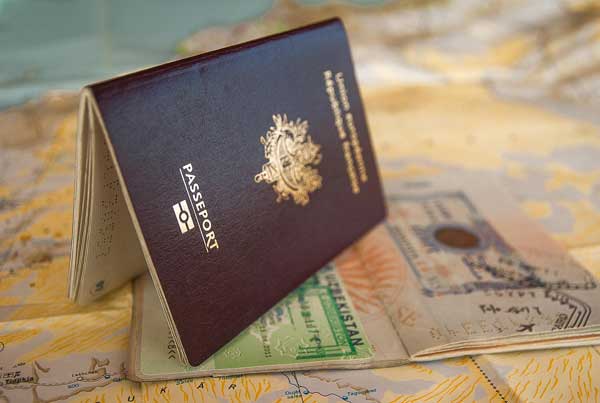NAFSA projects the US may lose up to 150,000 international students for the upcoming 2026/2027 admission cycle

[Passport, Photo Credit to Pixabay]
The United States risks losing up to 150,000 international students this fall, placing nearly $7 billion in tuition and related revenue in jeopardy.
On July 26th, NAFSA: Association of International Educators, in collaboration with JB International released a report forecasting a 30 to 40 percent drop in new enrollments, equating to an overall 15 percent decline in total international student numbers nationwide.
This decline in the number of international students threatens over 60,000 sustained by the spending of foreign students in university towns, the majority of whom pay full-tuition.
Interfaith students contribute not only full tuition but also billions in housing, food, transportation and other living expenses that invigorate local economies.
NAFA reported that a primary factor contributing to such a decline is the slowdown in visa processing, exacerbated by the suspension of student visa interviews between May 27 and June 18, 2025.
When interviews resumed, fortified social media vetting requirements not only lowered the visa issuance rates but also lengthened processing times in countries that account for a great proportion in the international student pie such as India, China and Japan.
Policy uncertainty has compounded the challenge, as prospective students increasingly doubt whether the U.S. remains a stable and welcoming destination for study.
Meanwhile, competitor countries such as the United Kingdom, Canada, and Australia are capitalizing on the uncertainty by facilitating their visa pathways.
Australia recently reversed plans to cap foreign student numbers, instead framing higher education as a strategic growth sector rather than a liability.
The financial risk for U.S. institutions is particularly acute, as international students frequently pay full out-of-state rates without subsidies.
For many smaller colleges and regional public universities, the loss of these students could mean staff cuts, reduced course offerings, or even program closures.
This comes on top of pandemic-era domestic enrollment declines, leaving budgets dangerously stretched.
International students have also been essential in maintaining U.S. leadership in STEM research, where they make up a significant proportion of graduate-level cohorts.
A prolonged decline could undermine the nation’s innovation pipeline at a time of intensifying global competition in advanced research.
Universities are experimenting with contingency measures, including expanding recruitment in less-affected regions, offering conditional online starts, and increasing scholarships.
Nevertheless, these efforts cannot fully offset the impact of restrictive or slow federal processes.
NAFSA estimates that each international student supports nearly two U.S. jobs, meaning the projected decline could cost over 60,000 positions nationwide.
College towns in states such as California, New York, Texas, and Massachusetts are expected to face further economic strain.
Housing markets could feel the impact as landlords confront vacancies and lower demand.
Local businesses, from cafes to bookstores, risk losing a reliable revenue stream.
Beyond the economic considerations, the drop jeopardizes the cultural and academic diversity that international students bring to U.S. campuses.
These students serve as informal ambassadors, building global networks that often translate into long-term economic and diplomatic ties.
Without swift intervention to restore efficient visa processing and send a clear message of openness, the U.S. risks ceding its position as the world’s top study destination.

- Choisung Park / Grade 10
- North London Collegiate School Jeju

![THE HERALD STUDENT REPORTERS [US]](/assets/images/logo_student_us.png)
![THE HERALD STUDENT REPORTERS [Canada]](/assets/images/logo_student_ca.png)
